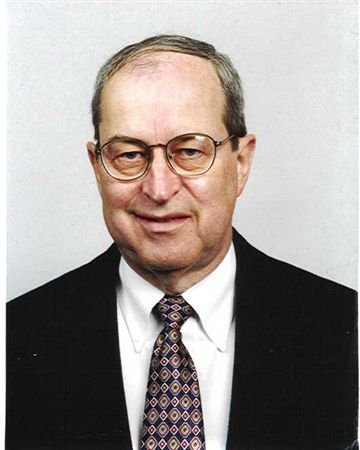|

Darryl was born on a farm in northwest Iowa in 1935. When he was 10, the family moved to a nearby small town, with predominantly Swedish residents, named Albert City. At that point, his father became a full-time partner in the local John Deere dealership. His early work experience included a paper route and later, for five summers, operation and setup of automatic screw machines at a local factory that manufactured grease guns. After graduating from high school, it wasn’t a tough decision to reject the offer of a career at the grease gun factory and Darryl left to attend their church related school, North Park College in Chicago. He transferred to Northwestern University two years later and received a B.S. degree in Mechanical Engineering in 1958.
At Northwestern, Darryl participated in the CO-OP program, then mandatory for undergraduate engineering students; this program required students in their final two years of study, to gain work experience by working every other quarter in an industrial company. Darryl applied to work at Bell and Howell Company, which he drove by every day on the way to school. Bell and Howell involved their “CO-OPs” in a very wide range of company activities including optical design, engineering, and manufacturing activities. The exposure to optics and particularly optical design opened up a very interesting world to Darryl. Computers were being used (two LGP-30s) which made it all the more interesting; these computers could trace a skew ray at the amazing speed of 1 ray surface per second compared to five minutes for a very skilled operator of a desk calculator! Darryl spent three months in the optical design department and actually enjoyed such mundane tasks as plotting ray aberrations (before the days of driven plotters). This work was very helpful in providing a basic intuitive understanding and visualization of lens aberrations.
Bell and Howell had growing needs for optical designers at this time, and Darryl accepted Irving (Sandy) Sandback’s offer to join them as a Jr. optical designer after graduation. In addition to Sandy, the Bell and Howell design group had several others that would later become significant members of the Southern California optics scene, including Tom Harris, Sy Brewer and Eileen Thiesen. Learning from these competent associates, Darryl quickly began designing lenses for the 8 and 16 mm camera and projector lines, as well as for defense and aerospace applications. A memorable project was the zoom lens he designed for the Surveyor project, the first soft landing on the moon; this project led to his first business trip, to Hughes in Culver City, meeting Hank Frels and Marcel Gawartin for the first time. After Tom Harris transferred to the Bell and Howell Research Center in Pasadena, Darryl became increasingly involved in computer programming activities, including assisting Tom in adapting his programs to work on Bell and Howell’s IBM 7070 machine.
In January of 1965, Darryl joined Tom Harris as a partner in Optical Research Associates, a Pasadena company Tom had formed in 1963. At ORA, Darryl designed a wide variety of optical systems including relay lenses, zoom lenses, anamorphic systems, FLIRs, and others; two of particular note were a 108 degree wide angle zoom lens for the Apollo-Soyuz Test Project and an 18 inch f/4 apochromatic used for high resolution earth photography from Skylab. In addition to lens design, Darryl was very active in software development for ORA’s proprietary optical design software. He was an advocate for making the software, now called CODE V, available as a commercial product, first as a turnkey hardware-software system in 1975, then access on the Cybernet network, and finally as a software product installed on the customer’s computer. With the introduction of the CODE V product, he gradually transitioned out of optical design and software development and directed ORA’s software marketing and customer service activities until 1994. He then became responsible for ORA’s business development activities until his retirement in January of 1998.
Since retiring, Darryl continues to serve on ORA's Board of Directors and to do a modest amount of consulting, primarily for ORA. He and his wife, Clarita, enjoy being away at their Lake Arrowhead home, traveling in the U.S. and abroad, and spending time with their six children and two grandchildren. He also enjoys participation in his church choir, renewing relationships with old college friends, following the stock market, and playing golf.
Darryl has been a member of OSSC since coming to California in 1965. He served the OSSC in various capacities in the mid-eighties and finally as President in the 1989-90 year. Darryl can be reached at 626-836-3874 or at darryleg@msn.com.
|